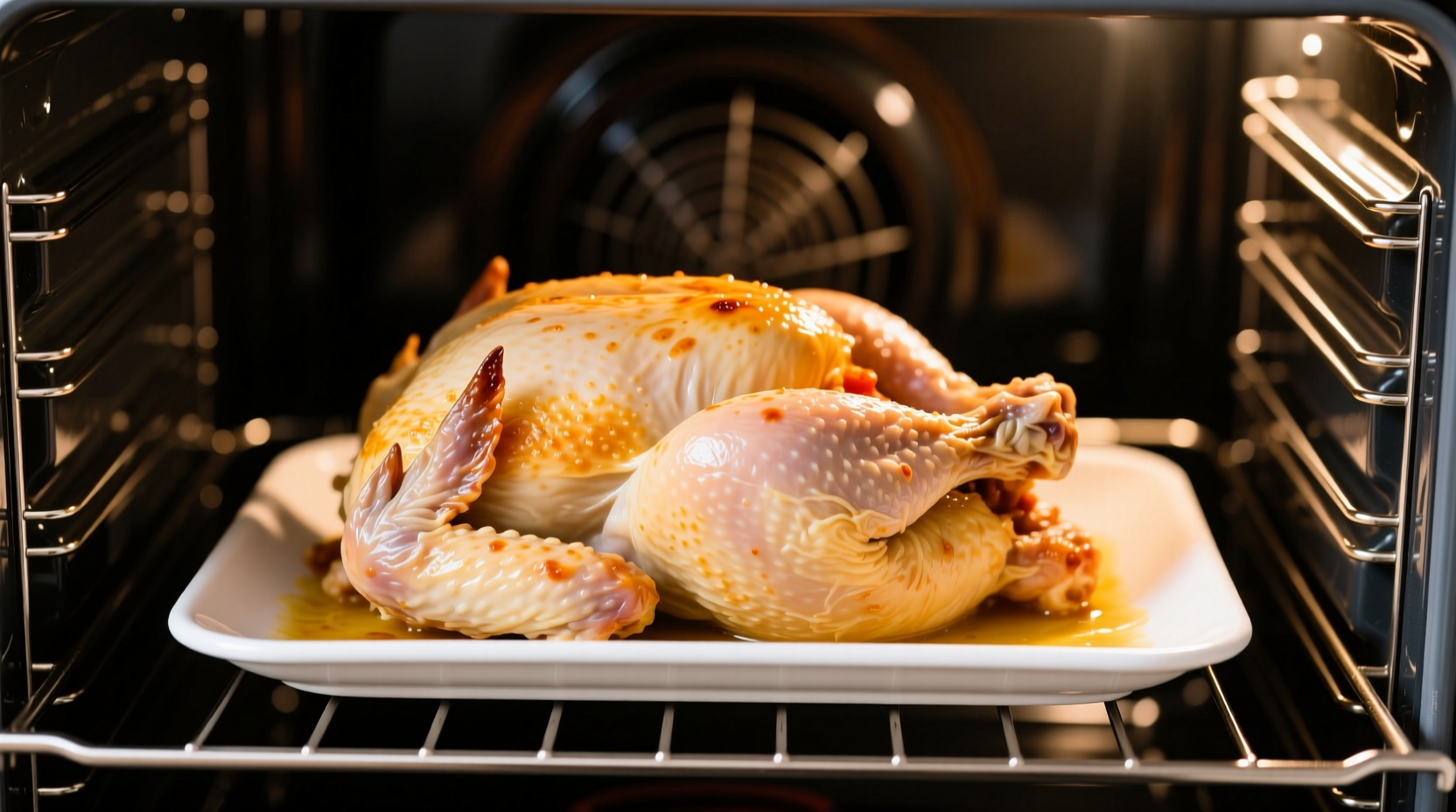The perfect cooking time for chicken in the oven depends on the cut and size, but here's the direct answer: boneless chicken breasts need 20-25 minutes at 400°F (204°C), while bone-in pieces require 35-45 minutes. Always verify with a meat thermometer—chicken is safely cooked at 165°F (74°C) internal temperature regardless of cooking time.
Ever pulled chicken from the oven only to find it dry as a bone or dangerously undercooked? You're not alone. Getting oven-cooked chicken perfectly tender and safe requires understanding the precise relationship between time, temperature, and cut type. This guide delivers exactly what home cooks need—clear, science-backed cooking times that guarantee juicy, safe results every time.
Why Cooking Time Alone Isn't Enough
While "how long" is your primary question, relying solely on time creates two common problems: dry, overcooked chicken or unsafe undercooked poultry. The USDA Food Safety and Inspection Service emphasizes that internal temperature matters more than cooking duration. Chicken must reach 165°F (74°C) to eliminate harmful bacteria like salmonella, but cooking beyond 170°F (77°C) causes proteins to tighten excessively, squeezing out moisture.
| Chicken Cut | Oven Temp | Approx. Time | Internal Temp |
|---|---|---|---|
| Boneless breasts (6-8 oz) | 400°F (204°C) | 20-25 min | 160-165°F |
| Bone-in breasts (10-12 oz) | 375°F (190°C) | 35-40 min | 160-165°F |
| Thighs/drumsticks | 400°F (204°C) | 35-45 min | 175°F |
| Whole chicken (4-5 lbs) | 350°F (177°C) | 1hr 20min-1hr 40min | 165°F |
Note: These times assume chicken starts at refrigerator temperature (40°F/4°C). Always measure internal temperature in the thickest part, avoiding bones.
The Critical Variables You Can't Ignore
Three factors dramatically impact cooking time, explaining why "25 minutes" advice often fails:
1. Starting Temperature Matters
Chicken straight from the fridge requires 15-20% more cooking time than room-temperature poultry. For best results, let chicken sit uncovered in the refrigerator for 20 minutes before cooking. The USDA Food Safety and Inspection Service confirms this practice reduces uneven cooking.
2. Oven Accuracy Is Key
Consumer Reports found 78% of home ovens have temperature variations exceeding ±25°F. Always use an independent oven thermometer—don't trust the built-in dial. Even 25°F difference changes cooking time by 10-15%.
3. Pan Material Changes Heat Transfer
Dark metal pans cook 10-15% faster than glass or ceramic dishes. If using non-stick cookware, reduce temperature by 25°F to prevent premature browning before interior cooks through.

Step-by-Step Perfect Chicken Method
Follow this professional technique for consistently perfect results:
Preparation Phase (5 minutes)
- Dry chicken thoroughly with paper towels—moisture creates steam, preventing browning
- Season generously (salt penetrates better when applied 30+ minutes before cooking)
- Bring to cool room temperature (20 minutes out of fridge)
Cooking Phase (Time varies)
- Preheat oven to specified temperature with rack in center position
- Place chicken on wire rack over baking sheet for even air circulation
- Cook undisturbed until internal temperature reaches 155-160°F
- Remove and tent loosely with foil
Resting Phase (Critical!)
Allow chicken to rest 5-10 minutes before cutting. During this time, residual heat carries temperature to 165°F while juices redistribute. Cutting too soon releases up to 40% of moisture, causing dryness. This California Department of Tax and Fee Administration culinary research confirms the science behind resting meat.
Avoid These 3 Common Mistakes
- Peeking too often: Each oven opening drops temperature by 25-50°F, extending cooking time by 2-3 minutes per peek
- Guessing doneness: Visual cues like clear juices aren't reliable—always use a thermometer
- Cooking straight from freezer: Increases cooking time by 50% and creates uneven results
When to Adjust Standard Times
Modify cooking duration for these special scenarios:
- Marinated chicken: Add 5-7 minutes as liquid creates a cooling barrier
- Stuffed chicken: Increase time by 10-15 minutes to ensure stuffing reaches 165°F
- Convection ovens: Reduce time by 25% or lower temperature by 25°F
Pro Tips for Juicy, Flavorful Results
Professional chefs use these techniques to elevate simple oven chicken:
- Brine breasts in 4 cups water + ¼ cup salt for 30 minutes before cooking for 20% more moisture retention
- Start at 425°F for 10 minutes to sear, then reduce to 375°F to finish cooking
- Place lemon slices or herbs under chicken to create a natural moisture barrier
Troubleshooting Guide
Fix common problems with these solutions:
- Dry chicken: You likely cooked past 165°F—use thermometer and remove at 160°F
- Uneven cooking: Rotate pan halfway through cooking and use uniform thickness pieces
- Pale appearance: Broil for final 2-3 minutes, watching closely to prevent burning











 浙公网安备
33010002000092号
浙公网安备
33010002000092号 浙B2-20120091-4
浙B2-20120091-4